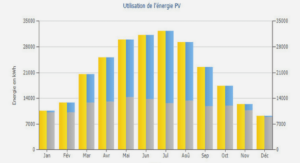La compilation dans la dynamique de la 1 ère édition de l’Amsterdam Workshop
La première édition de l’Am sterdam Workshop est réalisée du 27 au 30 juillet 1994, dédiée au cinéma des années 1910 de non-fiction. La dynamique de cet atelier est particulière. C’est un espace d’échange et de débat à partir de la program mation spécifique des collections du NFM. Les organisateurs de l’atelier, D. Hert ogs et N. de Klerk expliquent la raison d e traiter la non-fiction : “Our fascination is guided in our preservations and in our programmes, but it was not always clear how to translate this into research strategies. What we required, then was a format in which film screenings would retain a prominent place, but which would also constitute a platform and meeting place to share (…) In other words, besides providing film prints, the Nederlands Filmmuseum wanted to develop alternative ways of stimulating film research. (…) The idea of the Workshop is to create an informal gathering of a limited number of people, from both inside (films archivists, films scholars, filmmakers) and outside the world of cinema, and invite them to discuss problems related to our archival work (…) The importance accorded to the screenings reflected the museum’s open-minded archival philosophy, in which all available films, of whatever form or kind, are considered valuable. (…) the first project the museum wanted to reanimate, was nonfiction from the teens. Why this subject? First, because the early nonfiction collection (…) is simply a beautiful collection of films, often exquisitely coloured. Secondly, the collection consists of largely anonymous material, which has often survived in fragments, compilations, and the like. Although this has never been an obstacle to our fascination (…) these prints nonetheless confronted us with typical archival problems of selection, identification, restoration, and evaluation. If one turns to the available historical and theoretical literature, however, there is almost nothing that could guide us in resolving these problems. In fact, thus far silent non-fiction has played a negligible role in films histories, which generally restrict themselves to the established successes of the genre. (…) The twenty-five year gap between Lumière and Flaherty in the former, and the dismissive tone with regard to documentaries of the Des professionnels sont réunis dans l’atelier pour profiter de l’accès à ces belles collections de non-fiction comme pour discuter des problématiques archivistiques et historiques. Parm i les cinquante-trois participants de l’ atelier, il y a des archivistes, cinéastes, cher cheurs avec des parcours très différents et de plusieurs pays. 614 De Klerk témoigne que Hertogs, alors à la tête de l’activité de recherches du NFM, conçoit la dynamique de travail pour l’atelier : “(…) his idea was to combine the best of the 2 worlds. He left in 1997 (…) His idea of research agenda was setting attention on historical neglected or under research subjects. (…) Not to find answers but the right questions. Every body brings experience having discussions with the same foundation, with a common starting point. The idea was to combine and pick up from everybody’s brain. » Hertogs et de Klerk organisent et programment pendant trois journées, six séances composées de débats et de projections d’ une sélection d’environ soixante-d ix titres de leurs collections. En plus, ils com pilent six programm es projetés les soirs, ouverts auss i pour le public en général. Pendant l’atelier l’équipe fait conna ître de film s récemment restaurés comme ses remontages.
Traduire dans la recherche la fascination archivistique
Les six séances du Workshop se déroulent comme un laboratoire dans lequel les participants débattent à partir du visionnage et de l’ analyse collective des projections. Plus de la moitié de la program mation est com posée par des copies sélec tionnées de la colle ction Desmet. 615 Les programm es des six séances co mbinent les copies su ivant certains sujets traités : l’histoire du regard, les problèm es d’identification et de sélection, les qualités documentaires de la non-fiction, parm i les nomb reuses questions soulevées. Chaque séance est menée par un modérateur invité et/ou un membre du Musée qui appo rte son point de vue aux participants. Dans la manière de programmer pendant l’atelier, Delpeut remarque l’approche esthétique de son équipe : «We set up this Workshop because we were fascinated by the material we found and liked and we wanted to get some reaction to our initial fascination. Of course the obvious response is to go and find information, but then you get a more chronological, syntagmatic view of film history. We were so dazzled by these images, that we looked for a way to talk about the paradigmatic side of the material, to try to discover the underlying structure, the underlying fascination, that still affects us, moderns viewers, working with this old material. That’s why also we put together these programs, not by production company, or by country, or chronologically, but thematically and associatively, to try and provoke other answers than the answers most people in this room people can give easily, because they are good scholars and know where to look and where to go. But most of the time they don’t give an answer to our fascination with this material”. 616 Cette dynamique évoque à l’hist orien Tom Gunning celle de la conférence Brighton dont il était un participant: «Personally, I’m very excited by the idea of starting simply from the kind of amazement that one has before these early images. That was very much our experience with the early fiction films at the Brighton conference. (…) On the one hand, obviously one wants to know more, one wants to make more sense of what one’s seeing. (…) One is constantly applying familiar or semi-familiar models to understand them: looking at nonfiction films at first in terms of fiction films, for instance, or looking at these nonfiction films in terms of later documentaries, or in terms of a whole series of different linearities. (…).





